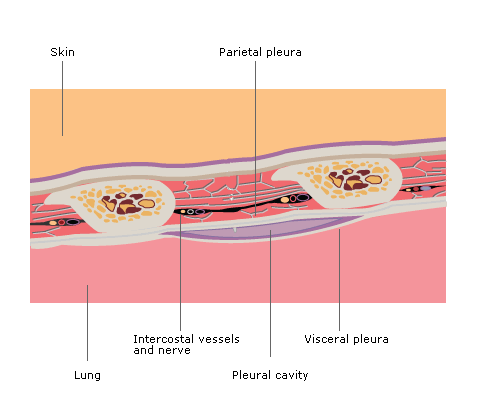Overview
The lungs are enclosed in a double layered sac, the pleura, which is slightly larger than the lungs themselves. The visceral pleura is closely adherent to the lung; the larger parietal pleura is attached to the chest wall and the mediastinum.
The pleural cavity is the space between the visceral and parietal pleura. It contains a few millilitres of serous fluid that allows free movement of the visceral and parietal pleura in relation to each other.
The outward spring of the rib cage and the elastic recoil of the lung results in a negative intrapleural pressure. An increase in the volume of the thoracic cage in inspiration increases the negative intrapleural pressure. If the airway is unobstructed, the lungs inflate.

The pleura